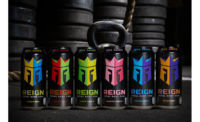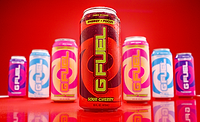Consumers turn to supplements, beverages to aid post-workout recovery
Healthy eating, nutrition market grows to $702 billion

A consumer at a typical smorgasbord buffet will find a wide variety of hors d’oeuvres, cheeses, salads, fruits, and hot and cold meats to entice every palate. Not the same as restaurant buffet, the “mix and match” mentality also fits well into sports recovery, and bone and joint health, as consumers are finding a “smorgasbord” of options to help them wind down after workouts and improve overall bone and joint health.
In its February “Sports Nutrition in the US” report, Chicago-based Euromonitor International forecasts that the global sports nutrition market will grow at a compound annual growth rate (CAGR) of 10.6 percent through 2023. Sports nutrition products specifically are expected to reach $17.1 billion by 2023.
“With more mainstream lifestyle consumers buying into the sports nutrition market, products that assist in recovery from exercise are finding an expanded audience. Products positioned for sports and recovery logged a 19 percent CAGR between 2012 and 2016,” says Pam Stauffer, global marketing programs manager at Minneapolis-based Cargill, citing data from Innova Market Insights.
Stauffer also notes that sugar in sports nutrition products is another “hot topic” for consumers, as many nutrition-conscious consumers are on the lookout for added sugars on nutrition facts’ labels. “In 2018, sports nutrition products accounted for 21 percent of all new product launches with stevia,” she adds.
In addition to paying attention to sweeteners, health-conscious consumers are looking for clean-label, plant-based ingredients and high-protein content in beverages that will fuel their bodies before, during and after workouts, experts note.
Georgia Dina Konstantopoulos, communications manager at FrieslandCampina Ingredients North America, Paramus, N.J., says the industry is aligned with consumers’ quest for having “a sound mind in a sound body” in order to lead a healthier lifestyle. “This is why we see products out in the market that include functional ingredients, such as vitamins or pro/prebiotics, and feature multiple benefits ranging from sleep well, to brain foods and digestion,” she explains.
Globally, consumer interest in sports nutrition, and bone and joint health is being driven by steady growth in the health-and-wellness industry. In 2017, the market grew to $4.2 trillion, an increase of 6.4 percent annually (twice as much as global economic growth), versus $3.7 trillion in 2015, with the healthy eating nutrition and weight loss industry accounting for $702 billion of that market, Konstantopoulos says, citing the 2018 Global and Wellness Economy Monitor.
Rehydrate, replenish, recover
Hugh Evans, marketing manager, Europe and Asia, at High Wycombe, United Kingdom-based Synergy Flavours, suggests that the rising performance of the $595 billion fitness, mind and body health markets can be attributed to the high-protein content of versatile products that can be used as a pre-workout beverage or as a recovery post-workout beverage.
“The growth in recovery drinks can be attributed, in part, to the growing interest in health and fitness and to those who regularly work out,” Evans says. “Speedy recovery after heavy workouts is no longer seen as the domain of the professional athlete and regular gym user, and manufacturers are capitalizing on this desire and need to refuel and recover the body after workout sessions.”
FrieslandCampina Ingredients’ Ermel Manuel, technical sales support manager of adult nutrition, suggests there are two types of sports recovery needs: one for immediate recovery and one to promote long-term muscle health. “Immediate recovery focuses on muscle soreness, muscle recovery and joint health,” he explains. “Long-term recovery allows muscles, nerves, bones and connective tissue time to rebuild and this is why rest is so important during the recovery process.”
The company offers Nutri Whey Native, a whey protein concentrate that supports muscle recovery and muscle building. “Nutri Whey Native is sourced directly from milk and is gently processed, and has about 14 percent higher leucine content, an important amino acid for signaling protein synthesis,” Manuel says.
L-Glutamine also is good for muscle recovery because during intense workouts, the body’s L-Glutamine can decrease by 50 percent, he adds.
At 65 percent, men tend to be the higher consumers of high-volume sports drinks, and Synergy’s Evans notes that powder-based sports recovery products continue to dominate the market. “These products can be bought in large quantities, have a longer shelf life and can be blended with milk or water to suit the user,” he says. “… Flavor innovation has become crucial, and we find ourselves working on all manner of novel flavors from Speculoos for Christmas, to Cherry Blossom for the upcoming Tokyo Olympics.”
Chicago-based SPINS’ Natural Insights Analyst Michelle Gillespie is keeping a close eye on tart cherry and cannabidiol (CBD) as functional ingredients within sports recovery beverages. “Sports-focused bands like VPX [are] incorporating tart cherry juice into recovery beverages and wellness-focused brands such as Cheribundi are marketing the ingredient for workout recovery,” she says. “CBD, the new ingredient on the block, is growing quickly upon introduction into the beverage market and has been spotted in an athletic recovery drink by Aethics water.
“Collagen is a major player in both the bone and joint health markets and is making its way into ready-to-drink beverages in the form of collagen waters, functional beverages and wellness shots,” she continues. “Turmeric is performing well in the joint health segment and is also a good fit for functional beverages. Vital Proteins has a Restore collagen shot that contains both collagen and turmeric along with tart cherry and is marketed for bone and joint support.”
Heather Arment, marketing coordinator at GELITA, Sergeant Bluff, Iowa, highlights that about 30 percent of total body protein is comprised of collagen, “the body’s protein,” she says. “Collagen peptides supplementation helps us stay strong, mobile, flexible and beautiful — for longer,” she says. “Because of this, the demand for beverage, food and supplement products, especially those ingredients with proven health benefits, has increased significantly in recent years.”
Among its portfolio, the company offers the clinically tested BODYBALANCE Bioactive Collagen Peptides, which — along with resistance exercise — increases muscle mass and strength while also decreasing fat mass, Arment says.
As a result of protein being a key building block in recovery drinks, Anne Louise Friis, business development manager for Americas at Viby, Denmark-based Arla Foods Ingredients, sees “massive opportunity” in the sports drink market, particularly because they not only provide the water needed to rehydrate, but the necessary protein to support muscle protein synthesis and limit muscle breakdown after a hard session.
“Protein provides the necessary amino acids to build up muscle,” Friis explains. “Last year, Arla Foods Ingredients launched a new high protein whey shot. It was a highly innovative concept as we managed to pack 20 grams of high-quality whey protein into a single 100-ml shot — something that had never been done before. As well as meeting athletes’ need for high quality protein to support muscle recovery, the concept was in line with the convenience trend.”
Widening the net
Ingredient suppliers also are turning to emerging solutions in an effort to expand the options that support bone and joint health.
Fullerton, Calif.-based Stauber Performance Ingredients exclusively distributes Aquamin, a plant-based source of calcium and 73 more minerals derived from red algae in the United States and Canada. “Aquamin has over 30 clinical studies that demonstrate the body’s ability to absorb and utilize calcium and the trace minerals for bone strength and bone health,” says Stauber’s Senior Brand Manager Patrick Stano.
David O’Leary, commercial manager at Marigot Ltd., Cork, Ireland, which manufactures Aquamin, expects the product to become more mainstream especially to help the “silver generation” avoid age-related bone mineral density decline and age-related muscle loss. The product also might prevent exercise associated bone-density reduction, he adds.
Yet, O’Leary suggests that younger consumers also are choosing to take science-backed formulations and supplements as part of a healthy diet so that they can enjoy active lifestyles for many decades.
Available in tablets, capsules and ideal for clear beverages, smoothies and plant-based dairy beverages, the Aquamin line has shown to be efficacious for bone and joint health, O’Leary says.
Even though protein plays an important role in maximizing athletic performance and recovery, not all proteins are created equal, according to Cargill’s Melissa Machen, senior technical services specialist for protein. “PURIS pea protein delivers 80 percent protein with a high protein digestibility-corrected amino acid score (PDCAAS),” Machen says “In addition, pea protein is high in branched-chain amino acids like leucine, the type of amino acids used to build muscle and provide energy.
“Pea protein is not a ‘complete’ protein because two of the amino acids, methionine and cysteine, are limiting,” she continues. “However, it’s easy to compensate. Formulators can either blend pea protein with a complementary protein source or simply add extra pea protein to achieve the target protein claim.”
Sourced from non-GMO yellow pea seed varieties and processed without the use of hexanes to bring out the best flavor, the certified organic PURIS pea protein also is a vegan-friendly option that checks all the boxes that consumers are looking for in label-friendly products, Machen adds.
SPINSscan tracks vitamins and supplements and herbs and homeopathic medicine data. These segments, excluding beverages, are experiencing slight declines. The bone health segment generated $5.3 million in sales, a 1.8 percent decline, in natural, specialty gourmet, and conventional multi-outlet retailers for the 52 weeks ending Jan. 27, while joint health notched sales of $2.5 million, a deceleration of 5.6 percent, in that same timeframe, the data indicates.
Vitamin K and collagen products picked up speed at 11.2 percent and 36.4 percent, respectively, behind the major players in the bone health segment including vitamin D, calcium and magnesium, based on SPINs data.
“In the joint health segment, glucosamine and chondroitin have the lion’s share of the dollars but saw a slight year-over-year decline of 7.3 percent and 5.6 percent, respectively, while turmeric generated sales of $16.3 million, an increase of 13.5 percent over the past year,” SPINS’ Gillespie says.
One ingredient commonly used in workout supplements to promote exercise recovery and performance is glutamine. Because glutamine can be difficult for the body to absorb, New York-based Kyowa Hakko USA developed Sustamine L-ananyl-L-glutamine, which is made using a patented fermentation process to yield high quality and purity, says Elyse Lovett, senior marketing manager at Kyowa Hakko.
“Sustamine has been shown to be 224 percent more absorbable than glutamine alone,” she says. “[The ingredient] is GRAS, stable, soluble and can be formulated into any type of beverage application.” BI
Looking for a reprint of this article?
From high-res PDFs to custom plaques, order your copy today!






